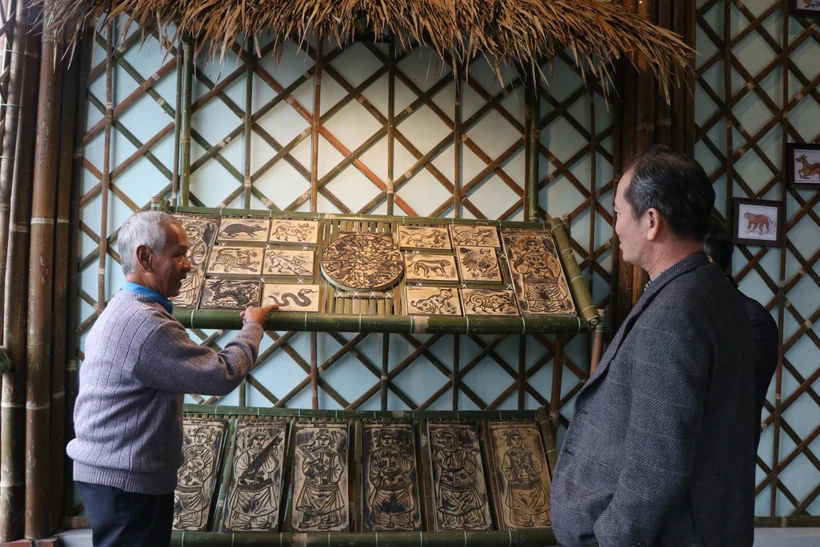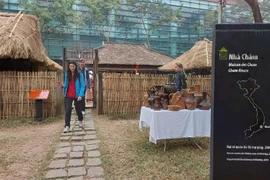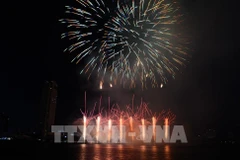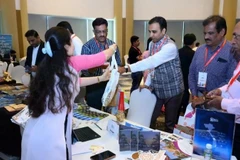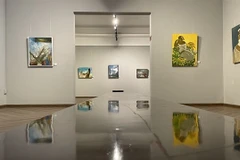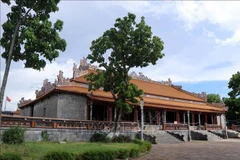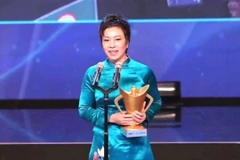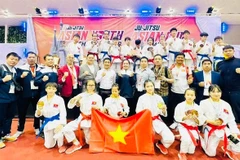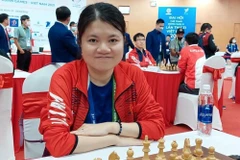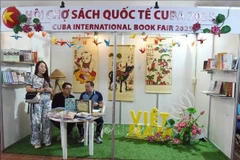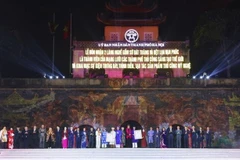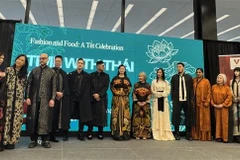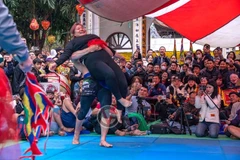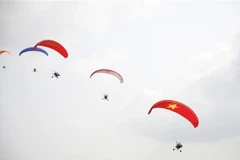Hue (VNA) - With a history spanning over 400 years, the folk paintings of the Sinh village, Duong No ward, Thuan Hoa district, the central city of Hue, are not only highly regarded for their artistic value but also deeply intertwined with the spiritual and cultural life of the region.
These paintings have become a unique cultural hallmark of the ancient capital. To revive and develop this traditional craft, local authorities are actively promoting vocational training, preservation efforts, and linking the craft with community-based tourism.
The Sinh village bustles with activity as the spring arrives, and artisans prepare to meet the demand for these traditional paintings. Sinh paintings are distinctive in both their purpose and the techniques used to create them.
According to artisan Ky Huu Phuoc, the ninth-generation inheritor of the craft, the tradition of making Sinh paintings has existed for hundreds of years, emerging shortly after the village was established.
The craft’s founder migrated from the northern province of Bac Ninh, which is why Sinh paintings share similarities with Dong Ho paintings, such as the use of woodblock printing, dó paper, and natural dyes.
However, the two styles differ in purpose as Dong Ho paintings are decorative, Sinh paintings are used for spiritual and ritual purposes, often burned as votive offerings after ceremonies.
Sinh paintings are categorised into three main groups, including human figures, objects, and animals, primarily serving the need for votive offerings in worship. Human figures include depictions of deities and ancestors, while object paintings feature items like clothing and money. Animal paintings often represent livestock or the 12 zodiac animals.
The creation of Sinh paintings is entirely manual, involving multiple steps such as paper cutting, applying shell powder, woodblock printing, drying, coloring, and detailing. The use of natural materials, like crushed seashells for the paper coating, is a distinctive feature of this craft.
Each painting is a unique product, reflecting the artisan’s skill and creativity. While traditional methods are still cherished, modern materials like industrial paper and dyes are now commonly used for convenience and cost-effectiveness.
Despite facing challenges, including periods of decline, Sinh villagers remain committed to preserving their ancestral craft. Artisan Ky Huu Phuoc, now nearly 80 years old, continues to create new woodblock designs, expanding the range of paintings beyond ritual purposes to include decorative themes like festivals and daily life.
His home has become a popular destination for tourists seeking to learn about and experience the craft. Phuoc recalls a time when the tradition was banned, and woodblocks were confiscated and destroyed. Determined to preserve the craft, he secretly saved and buried old woodblocks, later reviving the tradition by teaching younger generations.
Local authorities have also played a crucial role in supporting the craft. Duong No ward has implemented resolutions to preserve and develop traditional crafts, collaborating with vocational training centers and artisans like Phuoc to offer workshops and encourage households to establish painting businesses linked to tourism.
Pham Cong Khai, owner of the Moc Huy folk painting workshop, is one such example. After attending training classes, he opened his workshop to allow locals and tourists to experience the painting process firsthand, helping to promote Sinh paintings to a global audience.
Through their efforts, Sinh villagers are not only preserving a traditional art form but also ensuring its relevance in modern life, contributing to the cultural richness of Hue and beyond./.
